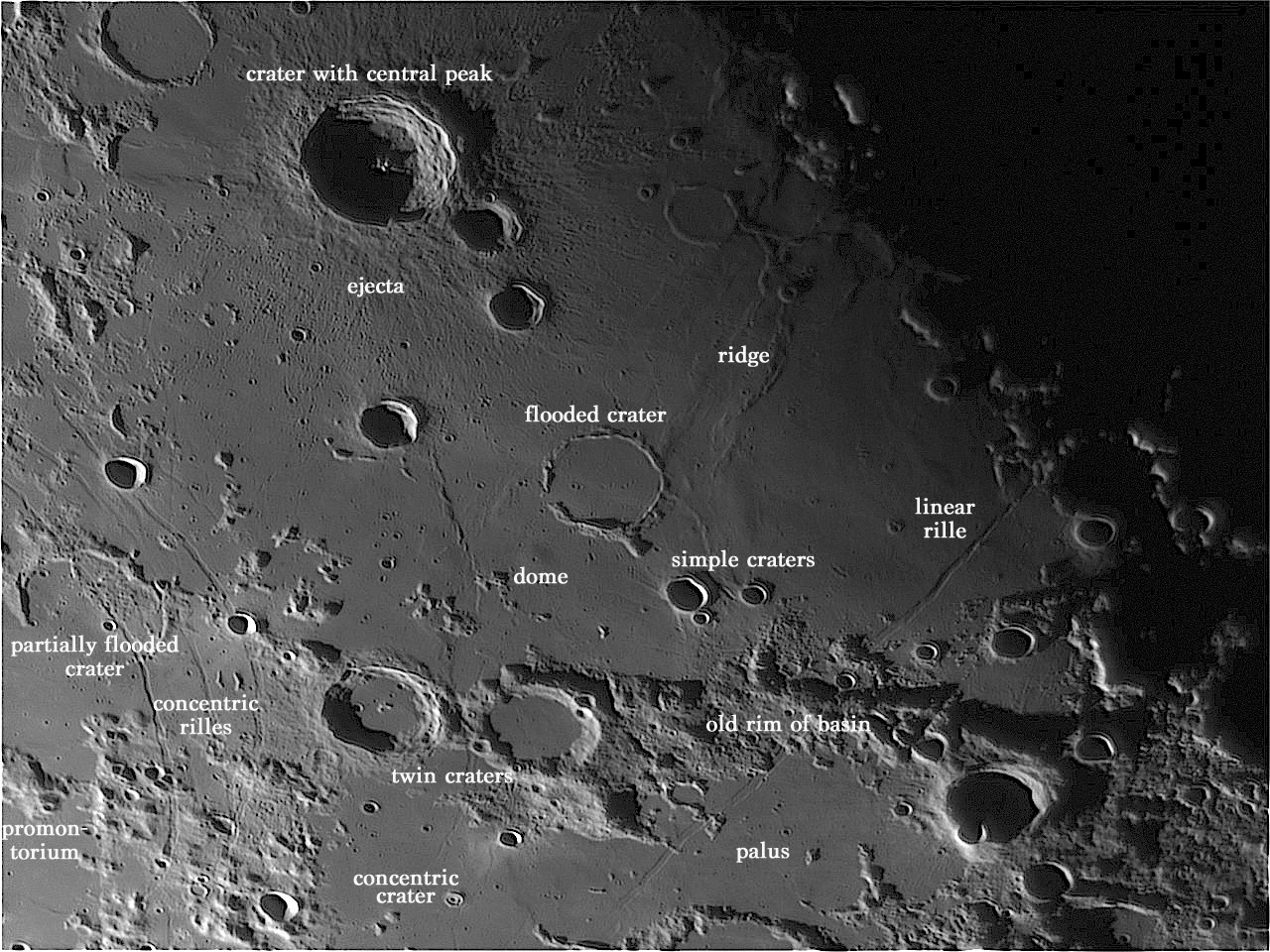Difference between revisions of "October 11, 2013"
| Line 21: | Line 21: | ||
<em>[http://lpod.wikispaces.com/21st+Century+Atlas+of+the+Moon 21st Century Atlas]</em> chart 23.<br /> | <em>[http://lpod.wikispaces.com/21st+Century+Atlas+of+the+Moon 21st Century Atlas]</em> chart 23.<br /> | ||
<br /> | <br /> | ||
| + | <p><b>Yesterday's LPOD:</b> [[October 10, 2013|Musings Inspired by a 4" Observation]] </p> | ||
| + | <p><b>Tomorrow's LPOD:</b> [[October 12, 2013|Age Dating a Moon Photo]] </p> | ||
<hr /> | <hr /> | ||
Revision as of 11:58, 7 February 2015
Terminalogy Tutor

image by Claude Navarro, Toulouse (France)
Here is a different type of annotated image than we have had before. Rather than giving names of features of interest Claude provides the
selenologic term for them. I always link to the chart in the 21st Century Atlas of the Moon (which is being reprinted) that gives the nomen-
clature, but sometimes viewers may not quite know exactly what landforms look like when they read words like ejecta, rille or concentric
crater. I like this example that Claude created and think I will assign making similar ones as an early exercise if I offer an online lunar geology
course in the spring, as I'm considering.
Chuck Wood
Note: Those who follow l'image lunaire du jour, the French version of LPOD will recognize Claude's name - he is one of the faithful translators;
Merci, Claude!
Technical Details
August/30/2013, 04:00 UT. C14 + Basler 1300 + IR Pass 685 filter. Processing with Registax 6 (300 Images on 2000).
Related Links
21st Century Atlas chart 23.
Yesterday's LPOD: Musings Inspired by a 4" Observation
Tomorrow's LPOD: Age Dating a Moon Photo



